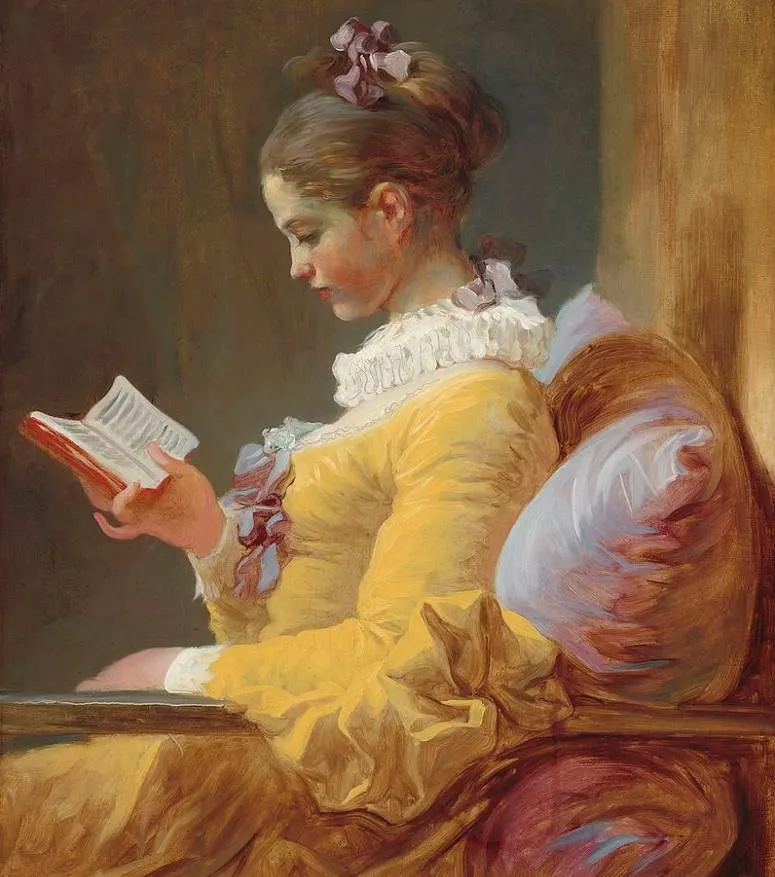One of the most prolific Rococo artists of the 18th century created many paintings that define this particular art movement. Jean-Honoré Fragonard (1732-1806) is best known for his ornamental works of art that were commissioned by the pleasure-loving court of Louis XV.
He wasn’t born to paint this particular type of painting, though. after all, he won the Grand Prix of Rome in 1752 with a history painting. He learned the technique of the Rococo style from François Boucher (1703-1770), one of the greatest artists of his time.
He soon gained favor from the most important people in France and the result is an oeuvre that reflects the exuberant lifestyle during the Ancient Régime shortly before the start of the French Revolution.
Let’s take a closer look at some of the most famous Jean-Honoré Fragonard paintings, some of the most amazing Rococo paintings ever produced.
1. The Swing
- Date created: 1767
- Dimensions: 81 × 64.2 centimeters (31.8 × 25.2 inches)
- Location: Wallace Collection, London, United Kingdom
The Swing is not only one of the most famous paintings by Jean-Honoré Fragonard, but it’s also considered to be one of the ultimate masterpieces of the Rococo era. It depicts a woman on a swing that is set in motion by an old man behind her.
A young man can be seen in the bottom left corner situated in such a position that he can see into her dress. As she flies in the air, she kicks her left foot so her shoe is seen flying into the air. This painting perfectly depicts the sense of motion often used in Rococo, as well as the subtle eroticism.
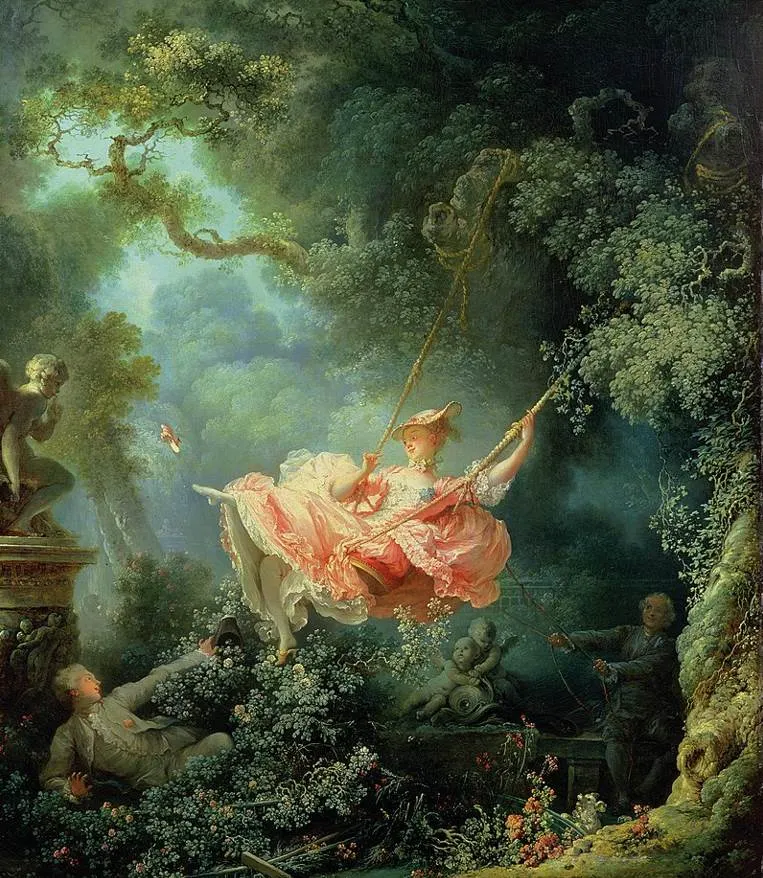
2. Jeroboam Sacrificing to Idols
- Date created: 1752
- Dimensions: 111.5 x 143.5 centimeters (43.9 × 56.5 inches)
- Location: Académie des Beaux-Arts, Paris, France
Jeroboam Sacrificing to Idols is a historical painting that allowed Fragonard to win the prestigious Grand Prix de Rome, a prize that earned him a scholarship to Rome. He was just 20 years old when he was awarded this remarkable prize.
What’s even more fascinating is that he didn’t receive academic training at the Académie royale de Peinture et de Sculpture, the institution that awarded this prize. It’s also clear from this work that he completely switched his style after falling in favor of the court of Louis XV.
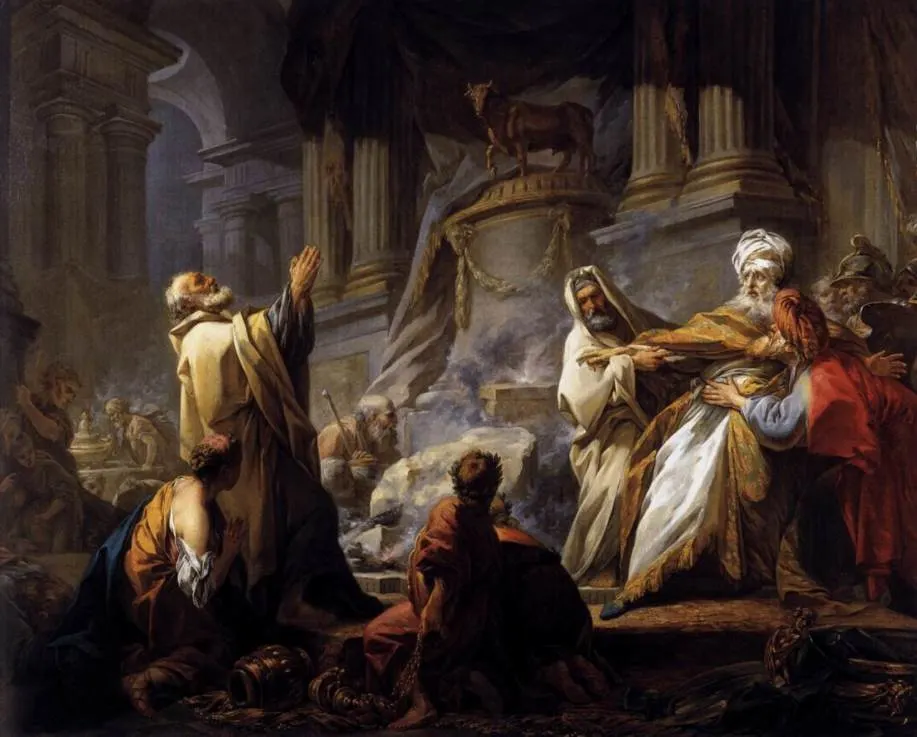
3. The Stolen Kiss
- Date created: late 1780s
- Dimensions: 45 × 55 centimeters (18 × 22 inches)
- Location: Hermitage Museum, Saint Petersburg, Russia
The Stolen Kiss is a delicate little work of art inspired by the Dutch Golden Age painters a century earlier. It depicts a young couple that is having a secret romance, one of the most popular types of genre paintings during this era in France.

The painting was originally owned by the King of Poland, Stanisław August Poniatowski (1732-1798), and was therefore housed at the “Palace on the Isle” in Warsaw. It was acquired by Tsar Alexander I in the 19th century and eventually ended up at the Hermitage Museum in Saint Petersburg.
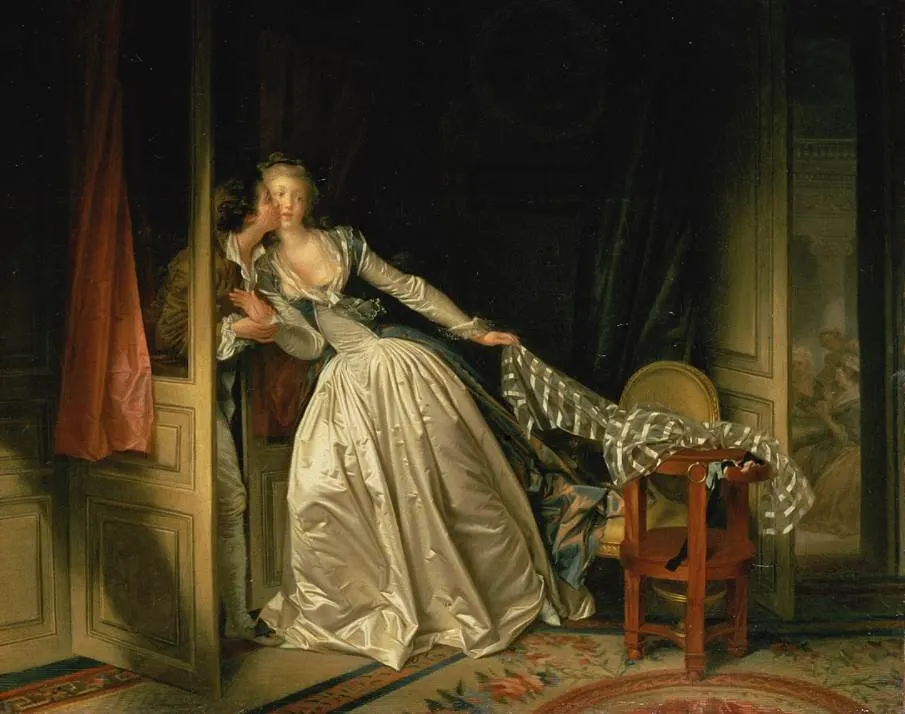
4. Coresus Sacrificing himself to Save Callirhoe
- Date created: 1765
- Dimensions: 309 × 400 centimeters (122 × 160 inches)
- Location: Louvre Museum, Paris, France
Coresus Sacrificing Himself to Save Callirhoe is another remarkable painting in the oeuvre of Jean-Honoré Fragonard. It’s often described as the artist’s effort to combine his personal theatrical style with the requirements of the conservative Académie Royale.
This worked out remarkably well because this painting was accepted at the Paris Salon of 1765, a great honor for the painter who was in his early 30s by then. This was not all because this work also allowed him to actually enter the Academy, a reward that skyrocketed his career at the time.
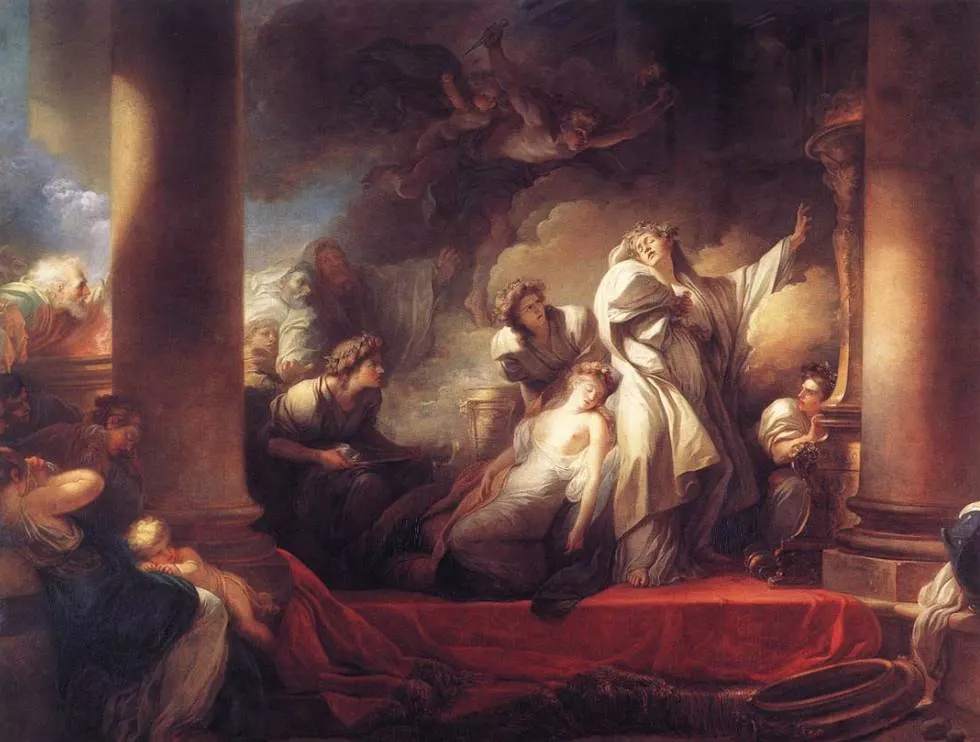
5. The Musical Contest
- Date created: 1754-1755
- Dimensions: 62 x 74 centimeters
- Location: Wallace Collection, London, United Kingdom
The Musical Contest is a painting that was created during the early phase of Fragonard’s career, shortly after he left the studio of his mentor, François Boucher. It depicts what is referred to as a “Pastoral” or an idealized version of country life.
What’s remarkable about this painting is that it was originally believed to have been painted by Boucher himself. At least, that was what the 4th Marquess of Hertford thought when he acquired the work in the 19th century. Luckily, Fragonard is held in equally high regard today as his master.

6. The Love Letter
- Date created: 1770-1773
- Dimensions: 83.2 x 67 centimeters (32.7 x 26.3 inches)
- Location: Metropolitan Museum of Art, New York City, United States
The Love Letter is another painting in the oeuvre of Fragonard that can be classified as a genre painting. It’s not the portrait of an identified young woman but a depiction of another popular subject in 18th-century France, the love letter.
The scene is immensely idealized, the woman is amazingly dressed and has a powdered face common in France at the time, and the sunlight appears to be highlighting the central part of the painting. This is another perfect example of the ideals of the Rococo art movement.

7. Blind Man’s Bluff
- Date created: 1750–1752
- Dimensions: 116.8 × 91.4 centimeters (46 × 36 inches)
- Location: Toledo Museum of Art, Toledo, United States
Blind Man’s Bluff is a fascinating work of art that depicts young people playing a game that hints at seduction. The girl looks out of her blindfold and they are most probably members of the bourgeoisie who are dressed up as pastoral figures.
The bright colors are typical of the artist’s works produced during and shortly after he was apprenticed at the studio of François Boucher. The painting is located at the Toledo Museum of Art in the U.S. State of Ohio and is one of the highlights of the museum.
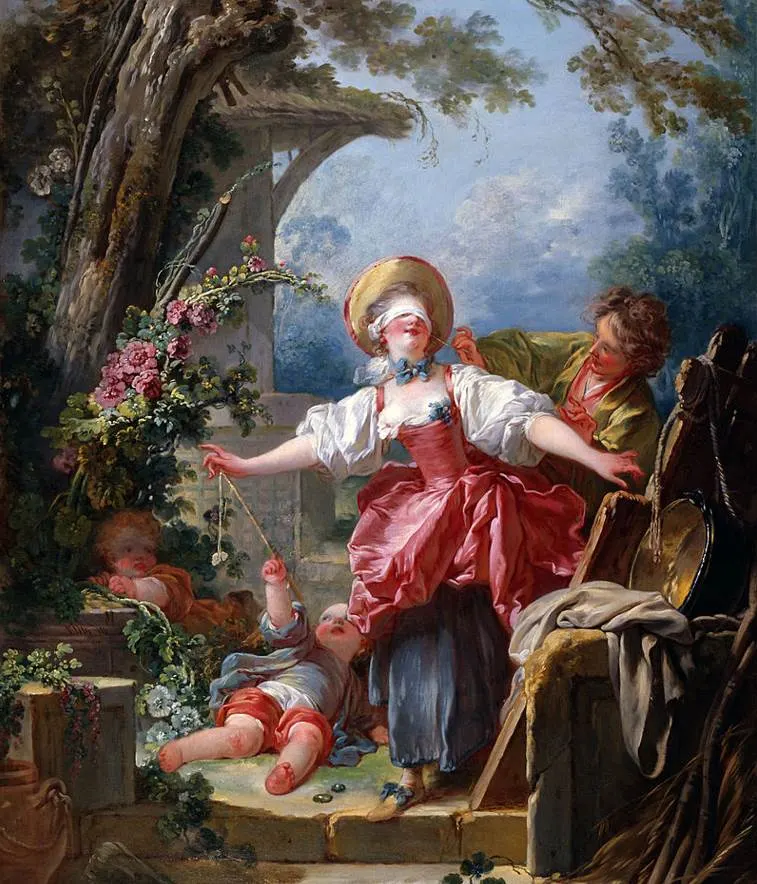
8. The Lock
- Date created: 1777
- Dimensions: 73 × 93 centimeters (29 × 37 inches)
- Location: Louvre Museum, Paris, France
The Lock is also known as “The Bolt” and although the interpretation of the painting isn’t 100% clear, it’s generally assumed that it depicts a couple inside a private room while the man is locking the door.
It’s one of the ultimate representations of the libertine spirit in France of the 18th century. This could especially be said of the court of King Louis XV, a man who had countless mistresses such as Madame de Pompadour, a fervent admirer of Rococo art.
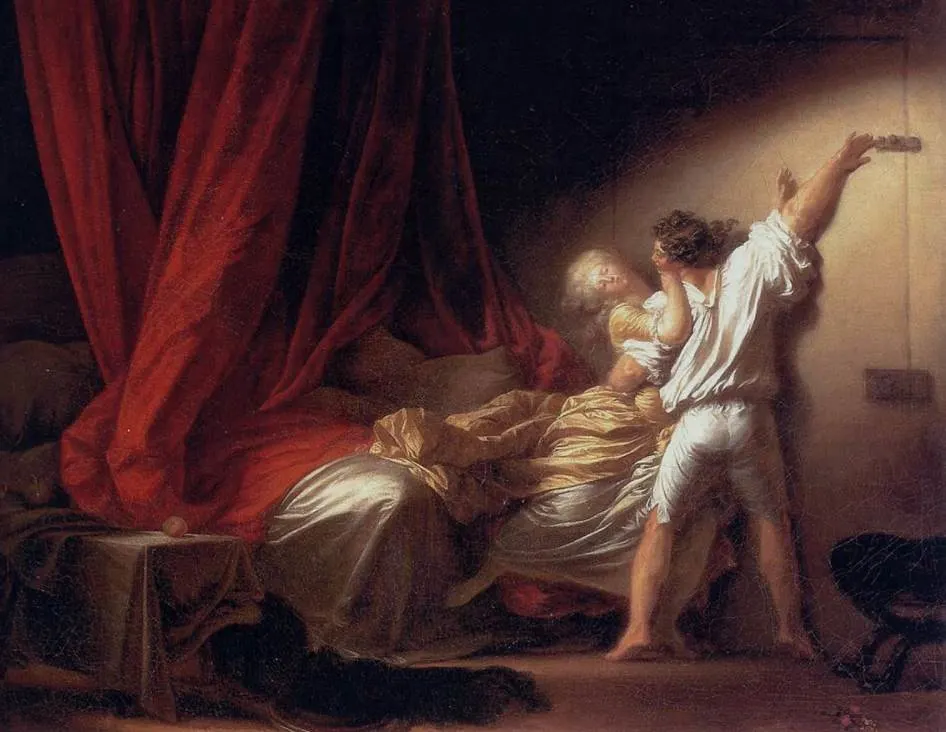
9. The See-Saw
- Date created: 1750-1752
- Dimensions: 120 × 94.5 centimeters (47 × 37.2 inches)
- Location: Museo Nacional Thyssen-Bornemisza, Madrid, Spain
The See-Saw is another work created during the early phase of Fragonard’s career. It was originally intended to be a pair with “Blind Man’s Bluff,” a painting that was acquired by a museum in Toledo in the United States.
The seduction we saw in Blind Man’s Bluff was the prequel to the See-Saw, a device often found in playgrounds. The up-and-down motion of the see-saw is a metaphor to explain that the seduction in the first painting resulted in lovemaking.

10. A Young Girl Reading
- Date created: 1769
- Dimensions: 81.1 × 64.8 centimeters (31.9 x 25.5 inches)
- Location: National Gallery of Art, Washington, D.C., United States
A Young Girl Reading depicts a young girl wearing a yellow dress as she is reading a book. This might seem like an ordinary scene depicting an actual young girl, but this is not the case as the explanation is a lot more mysterious.
This is one of several paintings by Jean-Honoré Fragonard that depicts a fantasy figure. This is not an actual portrait of a young girl but inspired by the artist’s imagination, quite intriguing indeed.
